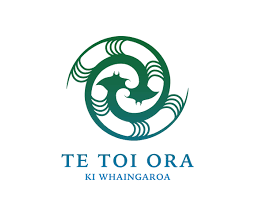Vibrio infections present as gastroenteritis or tissue infections that can be mild or very serious. These bacteria live naturally in aquatic environments and people become infected from eating contaminated kaimoana (seafood) or coming into contact with contaminated water.
Aotearoa New Zealand is seeing more Vibrio infections in recent years. Recent outbreaks have involved several cases identifying as Māori who became ill from consuming kaimoana collected in some regions of Aotearoa. Vibrio thrive in warm water, so as climate change brings warmer temperatures, Vibrio could increase in Aotearoa New Zealand, as seen in other countries.
The burden of infectious disease estimates (based on disability adjusted life years; DALYs) and the cost of illness is dependent on their incidence, the frequency of mortality and the severity of morbidity. Vibrio infections is an example of where infections are only notifiable in some cases such as an outbreak or illness from selected types of Vibrio.
The current surveillance system, including the database used to record hospitalisations and deaths in Aotearoa, is not capturing all vibriosis cases. This represents an area where under-reporting is likely to be occurring and therefore the burden of disease is also under-estimated.
>> PROJECT STARTED - 31st January 2024
This scenario is likely be the case for other infectious diseases in Aotearoa as well. More widely, current work within the research team is showing that doctors do have some unconscious bias with Māori patients when they present with gastrointestinal illness at general practices (GPs).
The current work is focusing on yersinosis (a disease caused by the bacteria Yersinia), but this issue is likely to be the same for Vibrio and other gastrointestinal illnesses too. This unconscious bias, and other factors, may be impacting on multiple actions that need to occur for a case to be diagnosed and thus reported, such as the patient being offered a test or followed up.
There are likely to be other barriers that make it difficult to understand the burden of gastrointestinal disease for Māori, which impacts on health service decision-making. Furthermore, the pathways of delivering trusted public health messages and alerts of risk to communities (such as in outbreaks) needs further research to improve impact.
Through fostering relationships and collaborations from different disciplines, we will strive to identify key gaps and seek ways to improve the public health surveillance system for Aotearoa, using Vibrio as an exemplar. We will also continue to explore the barriers that Māori face with testing and follow up of gastrointestinal disease. These relationships will be essential to co-design and co-deliver pathways to deliver trusted public health messages and alerts of risks to communities (such as outbreaks).
read more















